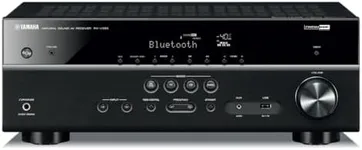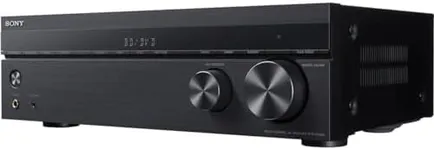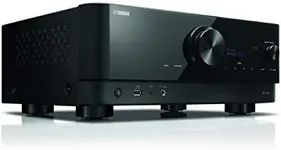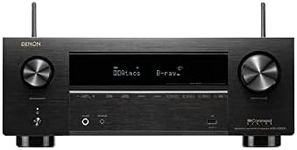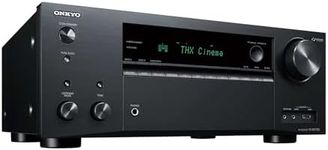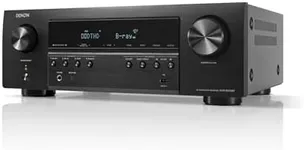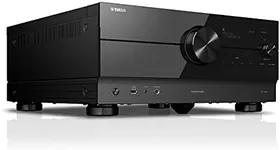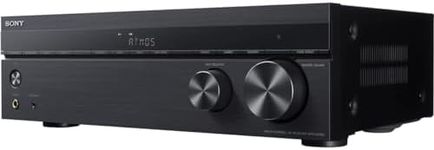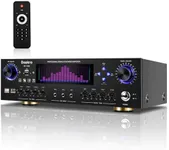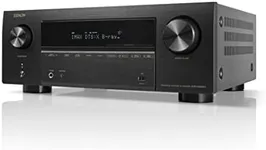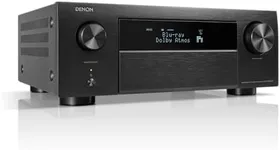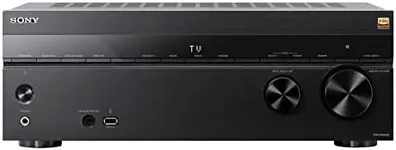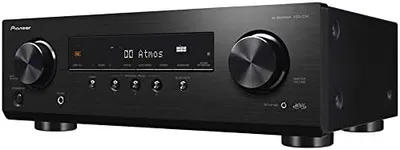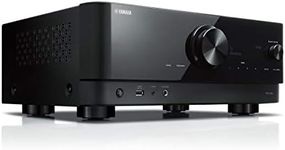Buying Guide for the Best Surround Sound Receivers
Choosing the right surround sound receiver can significantly enhance your home theater experience. A surround sound receiver acts as the central hub for your audio and video components, processing audio signals and distributing them to your speakers. To make an informed decision, it's important to understand the key specifications and how they align with your needs. Here are the main specs to consider when selecting a surround sound receiver.ChannelsChannels refer to the number of speakers the receiver can support. Common configurations include 5.1, 7.1, and 9.1 channels. A 5.1 system includes five speakers and one subwoofer, suitable for smaller rooms. A 7.1 system adds two additional speakers for a more immersive experience, ideal for medium-sized rooms. A 9.1 system includes even more speakers for a highly immersive experience, best for larger rooms. Choose the number of channels based on the size of your room and the level of immersion you desire.
Power OutputPower output, measured in watts per channel, indicates how much power the receiver can deliver to each speaker. Higher wattage means louder and clearer sound, especially at higher volumes. For small to medium rooms, 50-100 watts per channel is usually sufficient. For larger rooms or if you prefer very loud sound, look for receivers with 100 watts or more per channel. Consider your room size and listening habits when deciding on the power output.
Audio FormatsAudio formats refer to the types of audio signals the receiver can decode and process. Common formats include Dolby Digital, DTS, and newer formats like Dolby Atmos and DTS:X. Dolby Atmos and DTS:X provide a more immersive, 3D sound experience by adding height channels. If you want the latest and most immersive audio experience, look for receivers that support these advanced formats. If you are satisfied with standard surround sound, a receiver that supports Dolby Digital and DTS will suffice.
ConnectivityConnectivity options determine how you can connect your devices to the receiver. Important connections include HDMI inputs and outputs, optical and coaxial digital inputs, and analog inputs. HDMI is the most common and versatile connection, supporting both audio and video signals. Ensure the receiver has enough HDMI inputs for all your devices, such as gaming consoles, Blu-ray players, and streaming devices. Additionally, look for wireless connectivity options like Bluetooth and Wi-Fi for streaming music from your phone or other devices.
Room CalibrationRoom calibration technology automatically adjusts the audio settings based on the acoustics of your room. This feature uses a microphone to measure sound reflections and optimize speaker settings for the best audio performance. Receivers with room calibration can provide a more balanced and accurate sound experience. If you want hassle-free setup and optimal sound quality, choose a receiver with built-in room calibration technology.
User Interface and Ease of UseThe user interface and ease of use are important for a smooth and enjoyable experience. Look for receivers with intuitive on-screen menus, clear displays, and easy-to-use remote controls. Some receivers also offer smartphone apps for easier control and setup. If you are not tech-savvy, prioritize receivers with a user-friendly interface to ensure you can easily navigate and adjust settings.
